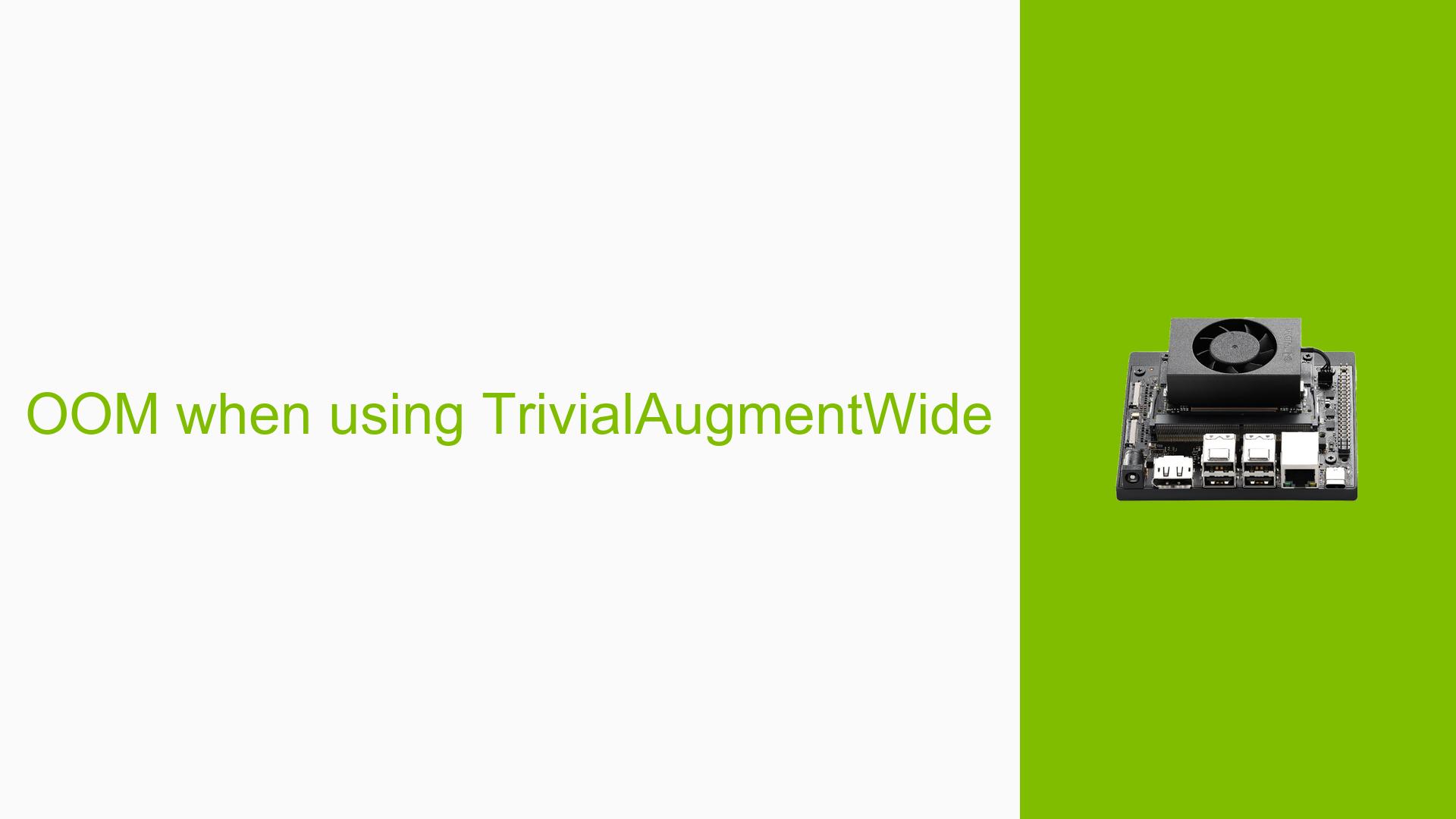OOM when using TrivialAugmentWide
Issue Overview
Users are experiencing Out of Memory (OOM) errors when utilizing the torchvision.transforms.TrivialAugmentWide function while transforming images on the Nvidia Jetson Orin Nano Developer Kit. The issue manifests during the execution of a custom function designed to plot transformed images, specifically when calling plot_transformed_images(image_path_list, transform_1, 6). Despite having an 8GB RAM and a 16GB swap space, memory usage spikes significantly as reported by jtop, even without a GUI desktop mode being active. The dataset loading with the same transformation does not trigger any errors, indicating that the issue arises during the training phase of a model. The error traceback reveals that the DataLoader worker is killed due to memory constraints, which severely impacts the user experience and functionality of model training.
Possible Causes
- Hardware Limitations: The Jetson Orin Nano has limited RAM (8GB), which may not be sufficient for processing large datasets or complex transformations.
- Software Bugs: There may be bugs in the PyTorch or torchvision libraries that lead to excessive memory usage.
- Configuration Errors: Incorrect configurations in the DataLoader settings, such as batch size or number of workers, can exacerbate memory issues.
- Driver Issues: Outdated or incompatible drivers may lead to inefficient memory management.
- Environmental Factors: Insufficient power supply or overheating could affect performance and stability.
- User Errors: Misconfigurations in the code, such as incorrect parameter settings or inefficient data handling practices.
Troubleshooting Steps, Solutions & Fixes
-
Diagnosing the Problem:
- Monitor memory usage using
jtopto identify spikes during transformations. - Check for any error messages in the terminal or logs that might indicate underlying issues.
- Monitor memory usage using
-
Gathering System Information:
- Use commands to check system memory:
free -h - Check GPU memory usage:
nvidia-smi
- Use commands to check system memory:
-
Isolating the Issue:
- Test with different batch sizes in the DataLoader to see if reducing them alleviates OOM issues:
BATCH_SIZE = 1 # Start with a lower batch size train_dataloader_simple = DataLoader(train_data_simple, batch_size=BATCH_SIZE, shuffle=True, num_workers=1)
- Test with different batch sizes in the DataLoader to see if reducing them alleviates OOM issues:
-
Potential Fixes:
- If using a high batch size (e.g., 8), try lowering it to 1 or 2.
- Reduce the number of workers in the DataLoader:
NUM_WORKERS = 1 # Start with one worker
-
Code Adjustments:
- Ensure that transformations are optimized and do not create unnecessary copies of data.
- Consider simplifying transformations or using less memory-intensive alternatives.
-
Documentation and Updates:
- Check for updates to PyTorch and torchvision libraries that may address known issues.
- Refer to Nvidia’s Jetson documentation for best practices regarding memory management and optimization.
-
Best Practices:
- Regularly monitor system performance and adjust configurations based on observed behavior.
- Use smaller datasets for testing before scaling up to full datasets.
-
Unresolved Aspects:
- Further investigation may be needed into specific bugs within PyTorch related to
TrivialAugmentWide. - Users may need to explore community forums for additional insights or similar experiences.
- Further investigation may be needed into specific bugs within PyTorch related to
By following these steps and recommendations, users can better manage memory usage on their Nvidia Jetson Orin Nano while working with image transformations in PyTorch.
